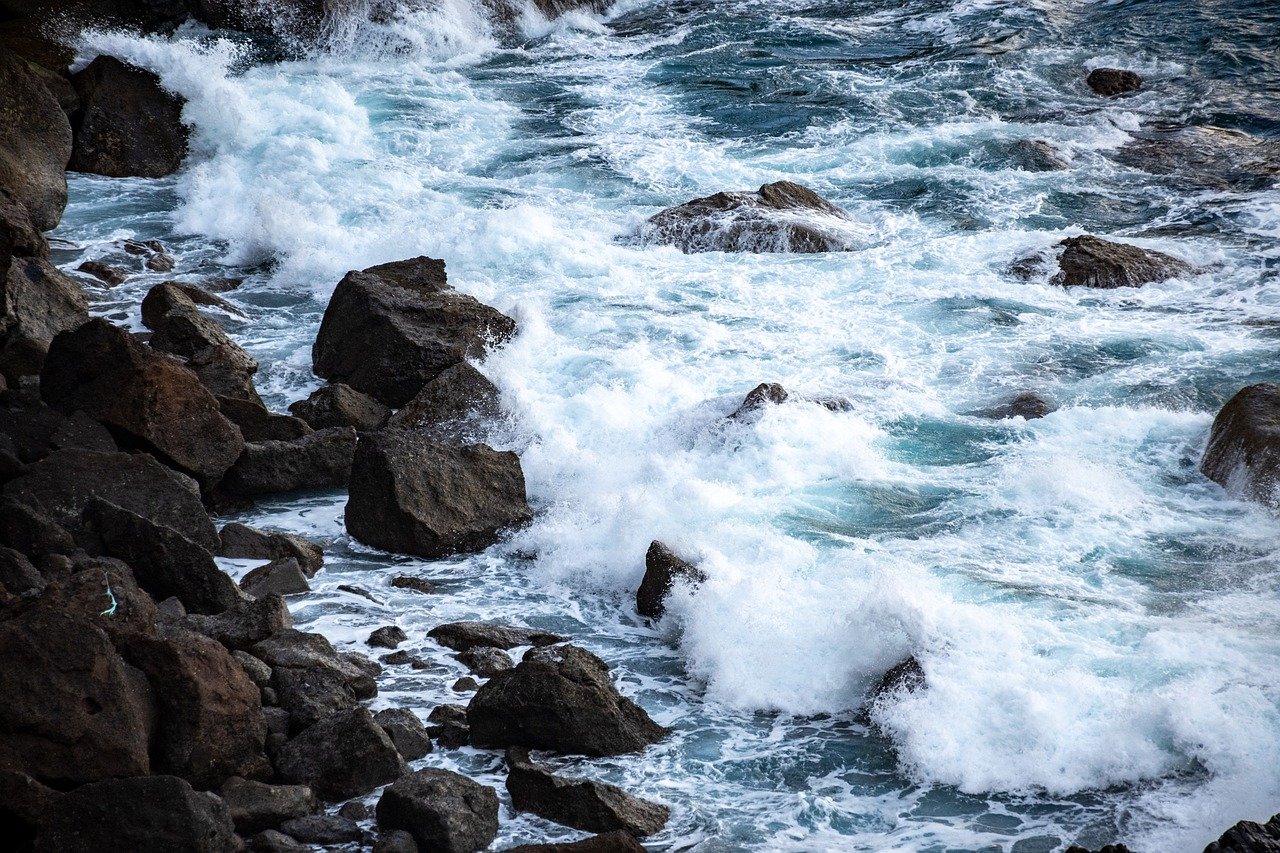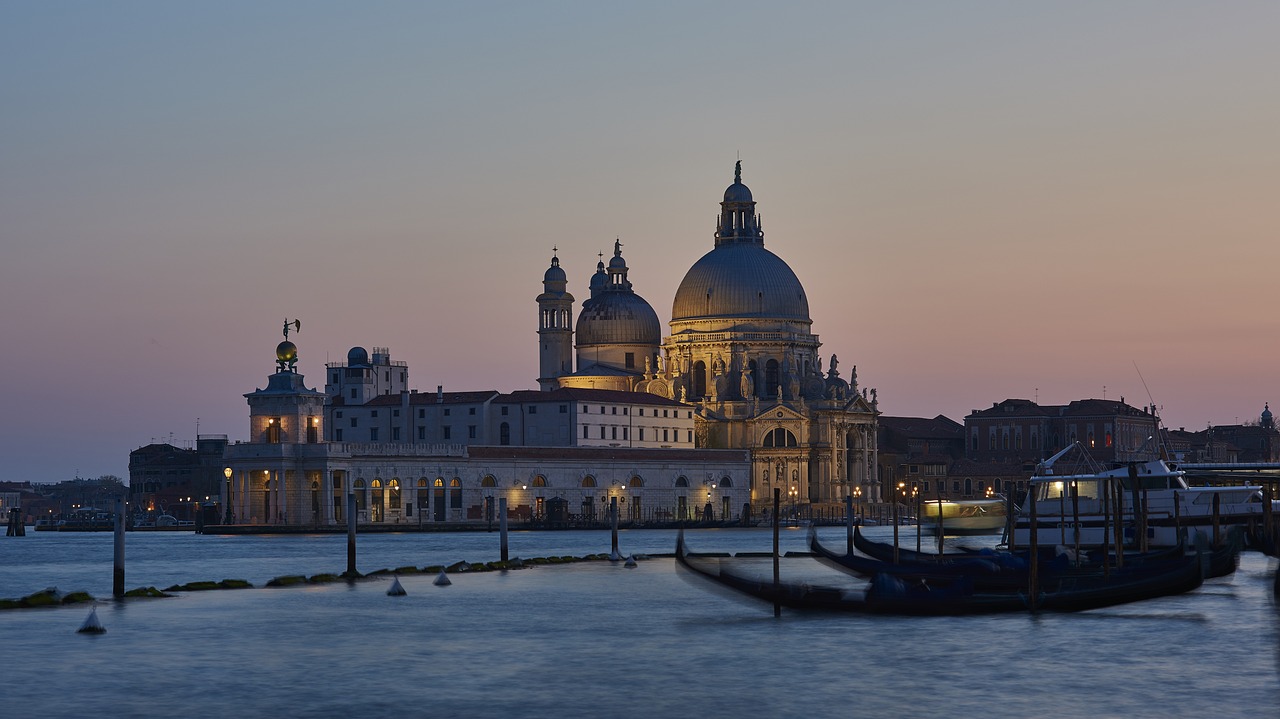Exploring the Impact of Climate Change on Heritage Sites
Climate change poses a significant threat to heritage sites around the world, jeopardizing their historical, cultural, and environmental value. These sites, ranging from ancient ruins to iconic landmarks, are facing unprecedented challenges due to the changing climate. As temperatures rise and extreme weather events become more frequent, heritage sites are increasingly vulnerable to damage and destruction. In this article, we will delve into the impact of climate change on these precious sites and explore the measures being taken to preserve them for future generations.

Overview of Heritage Sites
Heritage sites are not just mere historical landmarks; they are the living remnants of our past, embodying the rich tapestry of human civilization. These sites hold within their walls stories of triumphs, struggles, and cultural evolution, serving as a bridge between the past and the present. Their significance transcends mere aesthetics; they are repositories of our collective memory, reflecting the values and beliefs of societies long gone.
However, these precious heritage sites are facing an unprecedented threat in the form of climate change. The very elements that have preserved these sites for centuries are now turning against them, posing grave challenges to their existence. Climate change, with its erratic patterns and intensifying impacts, is putting these sites at risk, threatening to erase invaluable pieces of our shared history.
When we talk about heritage sites, we are not just referring to physical structures; we are also acknowledging the intricate web of intangible heritage that surrounds them. From ancient ruins to sacred monuments, each site carries with it layers of cultural significance that are deeply intertwined with the natural environment. The vulnerability of these sites to climate change is a stark reminder of our interconnectedness with the planet and the urgent need for sustainable conservation efforts.

Climate Change Threats
Climate change poses a significant threat to heritage sites around the world, jeopardizing their historical, cultural, and environmental significance. The increasing global temperatures and changing weather patterns are leading to a range of challenges that heritage sites must confront in order to ensure their preservation for future generations.
One of the primary threats that heritage sites face due to climate change is the rising sea levels. Coastal heritage sites are particularly vulnerable to the encroaching waters, putting iconic landmarks at risk of submersion and erosion. The need for effective mitigation and adaptation strategies is crucial to safeguard these sites from irreversible damage.
In addition to sea level rise, extreme weather events are becoming more frequent and intense, posing a direct threat to the structural integrity of heritage sites. Hurricanes, floods, wildfires, and other natural disasters can cause immediate and devastating destruction, requiring proactive measures to enhance resilience and preparedness.
Moreover, the gradual increase in temperatures globally can lead to accelerated decay and deterioration of heritage sites, impacting their architectural integrity and cultural significance. The delicate balance of ecosystems within these sites is also at risk, affecting the biodiversity and natural beauty that make them unique.
As climate change continues to escalate, the urgency to address these threats and implement sustainable solutions becomes paramount. Collaborative efforts between governments, conservation organizations, and local communities are essential to protect and preserve our invaluable heritage sites in the face of an uncertain future.

Sea Level Rise
Sea level rise is a critical consequence of climate change that poses a significant threat to coastal heritage sites around the world. As global temperatures increase, glaciers and ice sheets melt, leading to the expansion of seawater and the subsequent rise in sea levels. This phenomenon directly impacts low-lying areas, including many historic sites located along coastlines.
One of the most pressing challenges associated with sea level rise is the potential inundation of coastal heritage sites, putting iconic landmarks and archaeological treasures at risk of submersion. Additionally, the increased salinity of groundwater due to rising sea levels can accelerate the deterioration of building materials, such as stone and brick, further compromising the structural integrity of these sites.
Furthermore, the erosion of coastlines caused by higher sea levels can lead to the loss of valuable cultural landscapes and archaeological remains. As waves and storm surges intensify, the protective barriers that once shielded these sites from the sea are increasingly overwhelmed, leaving them vulnerable to irreversible damage.
To address the challenges posed by sea level rise, heritage site managers and conservationists are implementing a variety of adaptation strategies. These include the construction of seawalls and levees to protect vulnerable areas, the relocation of at-risk artifacts and structures to higher ground, and the development of sustainable coastal management plans that prioritize the preservation of cultural heritage in the face of changing environmental conditions.

Extreme Weather Events
Extreme weather events are becoming more frequent and severe due to the impacts of climate change. These events, such as hurricanes, wildfires, and droughts, pose significant threats to heritage sites around the world. The intensity and unpredictability of these weather phenomena can lead to irreversible damage to historical structures and cultural artifacts. For example, hurricanes can cause widespread destruction to ancient buildings, while wildfires can engulf entire archaeological sites, erasing centuries of history in a matter of hours.
Heritage sites are particularly vulnerable to extreme weather events because they are often located in exposed areas or regions prone to natural disasters. The rapid onset of these events leaves little time for proper evacuation or protection measures to be implemented, putting these sites at risk of total loss. Additionally, the aftermath of extreme weather events, such as flooding and landslides, can further deteriorate the structural integrity of heritage sites, making restoration efforts even more challenging.
One of the key challenges in mitigating the impact of extreme weather events on heritage sites is the lack of adequate funding and resources for disaster preparedness and recovery. Many heritage organizations struggle to secure the necessary funds to implement preventive measures or carry out emergency repairs in the aftermath of a natural disaster. This financial constraint often hinders the timely restoration of damaged sites, leaving them vulnerable to future climate-related threats.

Case Studies
When it comes to understanding the real impact of climate change on heritage sites, examining provides a tangible glimpse into the challenges faced by these invaluable locations. By delving into specific examples, we can uncover the intricate ways in which climate change is already reshaping the landscapes of our cultural history.
One prominent case study that vividly illustrates the effects of climate change is the Great Barrier Reef in Australia. The world's largest coral reef system has been severely impacted by rising sea temperatures, leading to mass bleaching events that endanger its vibrant marine ecosystem. Efforts to protect and restore the reef have been ongoing, highlighting the urgent need for conservation measures in the face of climate-related threats.
Another compelling example is the historic city of Venice, Italy, renowned for its intricate network of canals and architectural marvels. Venice faces the looming threat of increased flooding due to rising sea levels, putting its centuries-old buildings at risk of deterioration. Innovative engineering solutions, such as the MOSE project involving flood barriers, are being implemented to safeguard Venice's cultural heritage against the encroaching waters.

Great Barrier Reef
The is one of the most iconic and diverse marine ecosystems in the world, stretching over 2,300 kilometers off the coast of Australia. However, this natural wonder is facing significant challenges due to the impacts of climate change. The warming of ocean waters has led to coral bleaching events, where the corals expel the algae living in their tissues, causing them to turn white and making them more vulnerable to disease and death. This phenomenon not only threatens the biodiversity of the reef but also has far-reaching consequences for the marine life that depends on it for survival.
Efforts to protect the Great Barrier Reef have been ongoing, with initiatives focusing on both immediate conservation actions and long-term sustainability measures. Conservationists and scientists are working tirelessly to monitor the health of the reef, implement coral restoration projects, and raise awareness about the importance of preserving this natural treasure. Additionally, governments and organizations are collaborating to reduce carbon emissions and mitigate the factors contributing to climate change to safeguard the future of the reef.
Despite these efforts, the Great Barrier Reef continues to face challenges from a rapidly changing climate. The frequency and intensity of coral bleaching events are increasing, putting immense pressure on the resilience of the reef ecosystem. As temperatures rise and ocean acidification worsens, the delicate balance of life within the reef is at risk, threatening the survival of countless species that call it home.

Venice, Italy
Venice, Italy, known for its picturesque canals and historic architecture, is facing a significant threat from the impacts of climate change. The city, built on a series of islands in a lagoon, is particularly vulnerable to rising sea levels and increased flooding. With the sea levels rising at an alarming rate, Venice experiences more frequent and severe flooding events, known as "acqua alta," which endanger its centuries-old buildings and cultural heritage.
The threat of flooding in Venice has spurred innovative engineering solutions to protect the city's unique heritage. One notable project is the MOSE (Modulo Sperimentale Elettromeccanico) system, a series of retractable barriers designed to block high tides from entering the Venetian Lagoon. This ambitious project aims to safeguard Venice from the devastating effects of flooding and preserve its architectural treasures for future generations.
However, the preservation efforts in Venice face challenges such as funding constraints, bureaucratic hurdles, and the need for ongoing maintenance of the protective infrastructure. The delicate balance between preserving the city's heritage and adapting to the realities of climate change remains a pressing issue for authorities and conservationists in Venice.

Preservation Challenges
Preserving heritage sites in the face of climate change presents a myriad of challenges that require innovative solutions and collaborative efforts. One of the primary challenges is the lack of adequate funding for conservation and restoration projects. Many heritage sites struggle to secure the necessary financial resources to implement climate adaptation measures and maintain their historical integrity. This funding gap often leads to delayed or incomplete preservation efforts, putting these sites at greater risk of damage from climate-related events.
Another significant preservation challenge is the complexity of policy frameworks governing heritage site management. Navigating the intricate web of regulations, permits, and international agreements can be a daunting task for heritage site managers and conservationists. Inconsistencies in policies across different regions and jurisdictions further complicate efforts to address climate change impacts on these sites effectively.
Furthermore, raising public awareness about the importance of preserving heritage sites in the face of climate change is a crucial yet challenging task. Many people may not fully grasp the significance of these sites or understand the pressing need to protect them from environmental threats. Educating the public about the cultural, historical, and environmental value of heritage sites is essential to garnering support for conservation initiatives and mobilizing action to safeguard these irreplaceable treasures.
In addition to financial constraints, policy complexities, and public awareness issues, heritage sites also face technical preservation challenges in adapting to climate change. Implementing sustainable conservation practices, such as using eco-friendly materials and energy-efficient technologies, requires specialized knowledge and expertise. Heritage site managers must stay abreast of the latest advancements in conservation science and technology to effectively protect these sites for future generations.
Frequently Asked Questions
- What are heritage sites?
Heritage sites are places of historical, cultural, or environmental significance that are preserved for future generations. These sites hold unique value and are important for understanding our past and preserving our collective heritage.
- How does climate change impact heritage sites?
Climate change poses various threats to heritage sites, including rising sea levels, extreme weather events, and temperature changes. These factors can lead to erosion, flooding, and damage to structures, putting these sites at risk of destruction.
- What are some examples of heritage sites affected by climate change?
Some notable examples include the Great Barrier Reef, which is experiencing coral bleaching due to warming waters, and Venice, Italy, which faces the threat of flooding. These sites serve as cautionary tales of the urgent need to address climate change impacts on heritage.
- How can heritage sites be protected from the effects of climate change?
Protecting heritage sites from climate change requires a combination of mitigation and adaptation strategies. This can involve implementing sustainable practices, investing in conservation efforts, and raising awareness about the importance of preserving these sites for future generations.
- What challenges are faced in preserving heritage sites in the face of climate change?
Preserving heritage sites in the context of climate change presents challenges such as securing funding for conservation projects, developing effective policies to safeguard these sites, and increasing public awareness about the importance of protecting our shared heritage.



















